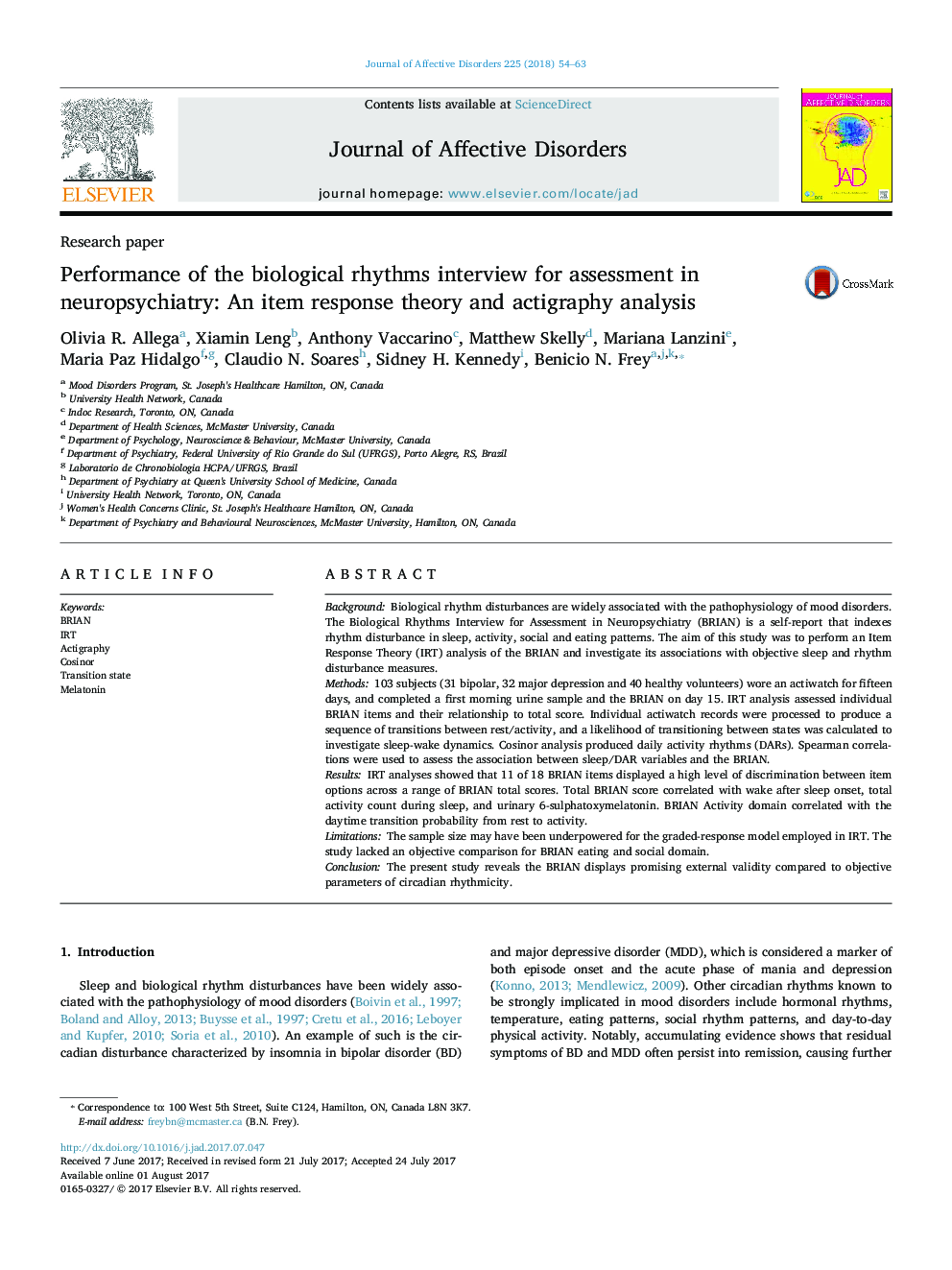| کد مقاله | کد نشریه | سال انتشار | مقاله انگلیسی | نسخه تمام متن |
|---|---|---|---|---|
| 5721688 | 1608100 | 2018 | 10 صفحه PDF | دانلود رایگان |
- IRT analyses show many BRIAN items display high discrimination across BRIAN scores.
- BRIAN total score correlates with wake after sleep onset, total activity count during sleep, and 6-sulphatoxymelatonin.
- BRIAN Activity correlates with rest-to-activity daytime transition probability.
- BRIAN displays external validity compared to objective sleep/rhythmicity measures.
BackgroundBiological rhythm disturbances are widely associated with the pathophysiology of mood disorders. The Biological Rhythms Interview for Assessment in Neuropsychiatry (BRIAN) is a self-report that indexes rhythm disturbance in sleep, activity, social and eating patterns. The aim of this study was to perform an Item Response Theory (IRT) analysis of the BRIAN and investigate its associations with objective sleep and rhythm disturbance measures.Methods103 subjects (31 bipolar, 32 major depression and 40 healthy volunteers) wore an actiwatch for fifteen days, and completed a first morning urine sample and the BRIAN on day 15. IRT analysis assessed individual BRIAN items and their relationship to total score. Individual actiwatch records were processed to produce a sequence of transitions between rest/activity, and a likelihood of transitioning between states was calculated to investigate sleep-wake dynamics. Cosinor analysis produced daily activity rhythms (DARs). Spearman correlations were used to assess the association between sleep/DAR variables and the BRIAN.ResultsIRT analyses showed that 11 of 18 BRIAN items displayed a high level of discrimination between item options across a range of BRIAN total scores. Total BRIAN score correlated with wake after sleep onset, total activity count during sleep, and urinary 6-sulphatoxymelatonin. BRIAN Activity domain correlated with the daytime transition probability from rest to activity.LimitationsThe sample size may have been underpowered for the graded-response model employed in IRT. The study lacked an objective comparison for BRIAN eating and social domain.ConclusionThe present study reveals the BRIAN displays promising external validity compared to objective parameters of circadian rhythmicity.
Journal: Journal of Affective Disorders - Volume 225, 1 January 2018, Pages 54-63
